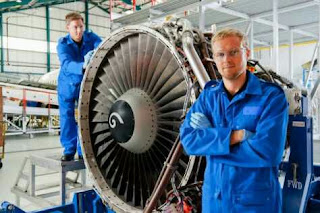Air Traffic Control Officer
Air Traffic Controllers monitor and direct the movement of air traffic in and around airports and enroute on specified paths directing the planes to stay safe distances from each other.
Std XII Stream: Science
Mandatory Subjects: Mathematics, Physics
Academic Difficulty : High
Job Profile
Are responsible for coordinating the safe arrival, departure and transit of all aircrafts flying in the airspace of an airport
They use radar and hi-tech communication equipment to direct the pilots for safety during landing , takeoff and taxiing.
Issue weather, wind, visibility and speed information to pilots required for take off, landing and en-route weather conditions
Monitor and conduct the air traffic on the ground at airports
Issue landing and takeoff instructions to pilots following ground traffic management procedure
ATCs are trained to monitor the aircraft on radar, to maintain pilot communication and to guide the aircraft out of the airport airspace.
Air traffic is guided and monitored by en-route control centers manned by ATCs.
ATCs alert rescue and response teams during any kind of aircraft emergency.
Skills required
Technical acumen
Team member
Problem solving
Decision making
Multitasking
Communication & clear voice and language
Patience
Concentration while working at odd hours and shifts
Employment Opportunities
AirportsIndian Air ForceIndian NavyAircraft manufacturers
Top Recruiting Companies
Airports Authority of IndiaHindustan Aeronautics Ltd.Indian Air ForceIndian Navy
How to get there?
Path 1:
Std XII
Stream : Science PCM
⬇
Graduation
B.Tech Telecom/ Electronics/Radio Engg
⬇
Selection Test
AAI*/ IAF**/ Indian Navy***
⬇
Training
⬇
Goal
Manager Air Traffic Contol
Path 2:
Std XII
Stream : Science PCM
⬇
Professional Exam
Instt of Engg :Section A & B exam
⬇
Selection Test
AAI * / IAF**/Indian Navy***
⬇
Training
⬇
Goal
Manager Air Traffic Control
Path 3:
Std XII
Stream: Science PCM
⬇
Selection Test
AAI*/ IAF**/ Indian Navy***
⬇
Training
⬇
Goal
Manager Air Traffic Control
Path 4:
Std XII
Stream : Science PCM
⬇
Diploma
Electronic Engg
⬇
Selection Test
AAI*/ IAF**/ Indian Navy***
⬇
Goal
Superintendent ATC
*Airports Authority of India conducts the selection of Managers ATC and Superintendants ATC through a written test, interview, voice test , medical exam. Maximum age is 28 years.
** Indian Air Force (Administrative Branch) selects ATC officers through Service Selection Board
***Indian Navy selects ATC officers though Service Selection Board (SSB)
**** Aeronautical Society of India
Training: After selection air traffic controllers have to undergo training at Civil Aviation Training Centres. On completion of the training they appear before a rating board and qualify to work with control tower/radar/aircraft control/flight information centers.
Where to study?
IITNITsState Engineering collegesAICTE recognized engineering collegesInstitution of Electronics and Telecommunication Engineering (IETE) www.lete.org.
Aeronautical Society of India www.asiindia.org
Aeronautical Society of India www.asiindia.org








